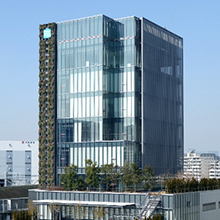The following table shows major risks which, in the judgment of the management, could have a material influence on the financial conditions, operating results and cash flows of the Nippon Air Conditioning Group, out of the factors affecting business and financial positions stated in our securities report. It should be noted that this table does not cover all the risks that our Group may face, and there remain other potential risks that are unknown at present. However, we did not include these risks in the table due to the difficulty in predicting, on reasonable grounds, when and to what extent such risks will arise, and how they could affect our group-wide operations if they do arise.
Our basic policy for group-wide risk management and corporate risk management systems are specified in the Risk Management Regulations. Under these regulations, the Risk Management Committee, chaired by a Director and comprised mainly of members of the Board of Directors, is working to control various factors that may interfere with our business operations and prevent risks from arising.
The descriptions of future events shown in the table are predictions based on the judgment of our Group as of the end of the relevant consolidated fiscal year, and thus contain many uncertainties. These predictions may turn out to be different from reality.
|
No. |
Category |
Risks |
Risk Management Measures |
|---|
|
1 |
External business environ- ment |
|
|
|
2 |
Competi- tive environ- ment |
|
|
|
3 |
Manpower |
|
|
|
4 |
Overseas business develop- ment |
|
|
|
5 |
Accidents during mainte- nance / renovation work or disasters |
|
|
|
6 |
Specific regulatory require- ments, business practices, and manage- ment policies |
|
|
|
7 |
Informa- tion manage- ment |
|
|
|
8 |
Internal control |
|
|
Notes:
- “Facilities with a special environment” refer to hospitals, research institutions, manufacturing plants, and other special-purpose facilities.
- While the risk and risk management measures relevant to Covid-19 infection are stated in the category 1.External business environment, we are also taking various other measures to minimize the impact of Covid-19 under the leadership of the Risk Management Committee, e.g., by collecting relevant information and sharing it with employees on a group-wide basis from time to time.







